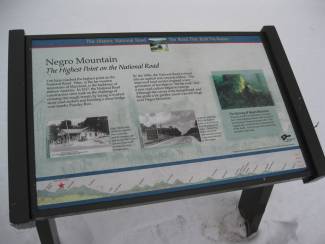Collection Name
About
NEGRO MOUNTAIN
COL. THOMAS CRESAP made his home at Skipton or Shawnee Oldtown on the Potomac. One night the settlement was attacked by Indians; the settlers defended themselves until morning when the red men withdrew, but a family had been murdered and some horses stolen. Col. Cresap ordered his men to prepare to pursue the fleeing savages.
His body-servant, Nemesis, a big negro, was cleaning his gun, and the Colonel said to him: "Well Nemesis, are you ready for the fight"? The negro replied, "Yes, massa; but I don't come back." Col. Cresap jestingly said, "Well, Nemesis, if you are afraid of being killed, you can stay here with the women, and I will go on without you." Nemesis hesitated, then replied, as he continued to clean the rifle, "Massa you know I's not afraid; where you go, I will go; where you fight, I will fight; but Nemesis will not come back."
With the morning light Cresap and his band were upon the Indians' trail, pursuing them over the Savage and Meadow mountains to the next mountain, where they overtook them and had a severe fight, killing several of the enemy. Fighting bravely at his master's side. Nemesis was slain and buried on the mountain, which has since borne the name of his race.
—J. Thomas Scharf's History of Western Maryland : being a history of Frederick, Montgomery, Carroll, Washington, Allegany, and Garrett Counties from the earliest period to the present day : including biographical sketches of their representative men. Philadelphia : L.H. Everts, 1882
This is the story of how Negro Mountain in Garrett County received its names as told in Thomas Scharf's 1882 History of Western Maryland, and reprinted in the Glades Star, a publication of the Garrett County Historical Society, Volume I, 1941-1949.
Additional research on this subject by historian Champ Zumbrun indicates that Nemesis was a “free Negro,” and that the name "Nemesis" itself did not appear in writings until after over 120 years from the 1756 event on the mountain. Based upon even further research by Champ Zumbrun, the name “Negro Mountain” first appears on maps dating as far back as 1822. Additional maps bearing this name appeared in 1826, 1834, 1836, 1838, 1873 and 1876. The links are below.
Zumbrun’s research further states that John Jacob’s history of Michael Cresap published in 1826 confirms the mountain is named Negro Mountain as a result of the 1756 incident. Jacob had married the widow of Michael Cresap who was at the incident in 1756 that resulted in the naming of the mountain.
1822, Melish, John - Map of Pennsylvania : constructed from the county surveys authorized by the state and other original documents
1826, Melish, John - Map of Pennsylvania, constructed from the county surveys authorized by the State; and other original documents by John Melish
1836, Lucas, Fielding Jr - Maryland, Delaware, and Parts Of Pennsylvania & Virginia
1838, Bradford, Thomas G. - Maryland
1873, Gray, O.W. - Delaware and Maryland.
1876, Gray, Frank A. and Gray, O.W. - Maryland, Delaware and the District of Columbia.
And finally and perhaps most importantly, this research by Scott Williams:
“The oldest reference to the place name “Negro Mountain” was found in The Journal of Nicholas Cresswell, 1774-1777. Nicholas Cresswell (1750–1804) was an Englishman from Derbyshire who left his farming community for the North American colonies at the age of 24. Cresswell was a diligent diarist and his notes on three years of travel in the Middle Atlantic colonies at the beginning of the Revolutionary War have provided a wealth of material for historians. His diary entries from April 1775 trace his travels from the Potomac Valley to the Ohio River including a recitation of each ridge that he crosses. In both his westward journey and his return to the Potomac Valley in October 1775 he cites 'Negro Mountain' as a landmark – an indication that the mountain was known by its current name just 19 years after the events of 1756. - The journal of Nicholas Cresswell, 1774-1777
Negro Mountain also appears as a place name in a 1786 Bedford County property tax roll for Turkey Foot Township published in the Freeman Journal 6. The construction of the National Road on Negro Mountain is reflected in a table of distances published in the Maryland Gazette in 1807.”
Local historian Dave Williams also noted a reference to the ridge being known as "Negro Mountain" in an article, "A Quaker Pilgrimage; Being a Mission to the Indians from the Indian Committee of the Baltimore Yearly Meeting, to Fort Wayne, 1804"; William H. Love; Maryland Historical Magazine, Vol. IV, No. 1, March 1909. pg. 5.
The photograph of the marker at Negro Mountain was taken February 2011 by Albert Feldstein
